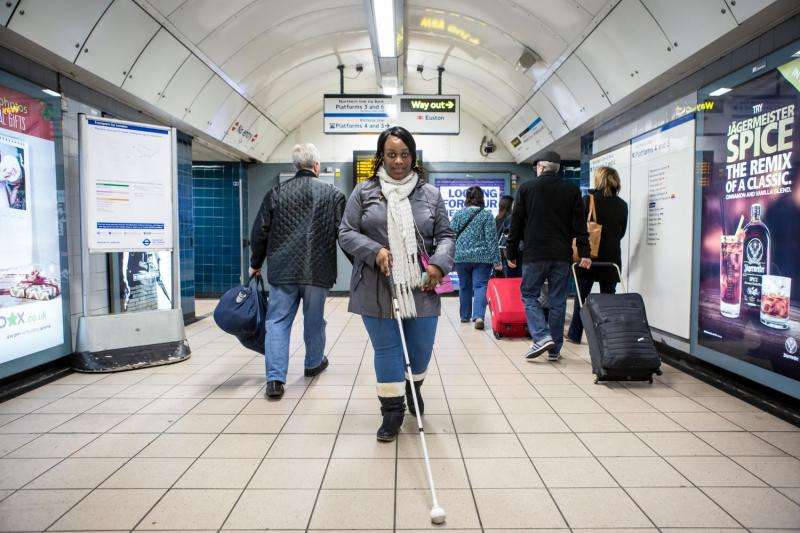December 3, 2015 weblog
Wayfindr wants standardized guidelines for steering visually impaired

Consider going home alone on a train during rush hour at a station you are not all familiar with if you are not sighted.
Where is the entry gate? Where do you go after the gate? Walk forward, left, right? Is there a stairwell? Is there a lift? Escalator? Navigating sidewalks is challenging enough; going on the subway alone, even if strangers were to respond properly to questions, would seem especially daunting.
How to improve access for blind people?
Wayfindr, a collaboration between ustwo, the digital product studio and RLSB (Royal London Society for Blind People, with its Youth Forum), have been working toward guidelines for using smartphones to guide vision-impaired people in urban areas.
RLSB said Wayfindr is focused on becoming an open standard for audio-based navigation.
The team recently launched a major underground subway system trial —fundamentally, a trial of a digital navigation system, seeing how the trialists responded. The Wayfindr trial took place at London's Euston Tube station.
"Emerging technologies such as smartphones and Bluetooth Low Energy (BLE) Beacons point to a future of independent navigation for blind people. There is a pressing need to develop a consistent standard to be implemented across wayfinding systems. This will open up a world where vision-impaired people are no longer held back by their sight loss," said the Wayfindr team.
The initiative is supported by a $1m grant from Google.org. The grant will allow Wayfindr to set the open standard. The first release of the Wayfindr Standard, for underground and rail stations, is set to launch early 2016.
Trialists at the Euston event voiced similar comments to another trial collaboration elsewhere involving Microsoft recently, aiming to help the blind navigate around towns and cities: To sum up the observation, 'I am used to having to ask for assistance...I would rather try to attempt the journey myself.'
Umesh Pandya of Wayfindr said their mission was to empower people and to provide them, as they move from environment to environment, with a consistent experience.
Psychologically, the ability to move around independently reduces the risks of isolation; practically speaking, the ability to move around, including navigating the tube, can facilitate accessibility to programs and jobs. "I feel more like a Londoner," said a participant with vision impairment. "It made me feel included just in travelling, really." She said if the initiative could spread from the tube to places above ground, it would close the gap even more, between those who are sighted and those who are nonsighted.
David Waboso, Capital Programmes Director for the London Underground, said Euston as a chosen site was "really putting the system through its paces, to see whether it can fulfil its promise at one of London's busiest Tube stations."
How it works:Once they have selected their destination, they are guided via audio directions triggered by signals from beacons installed throughout the station.
What will be in the Wayfindr Open Standard? There will be design and technical guidelines alongside a demo app.
For example, guidelines will cover audio instructions; their detail, length and the language used in them. "Reassurance and Orientation" will focus on how to reassure vision-impaired people during their routes and communicate their orientation. There will also be guides on how to install technologies such as Bluetooth Low Energy beacons in venues.
More information: www.wayfindr.net/
© 2015 Tech Xplore




















